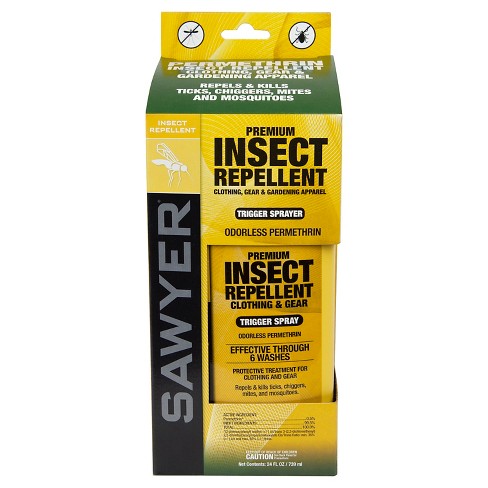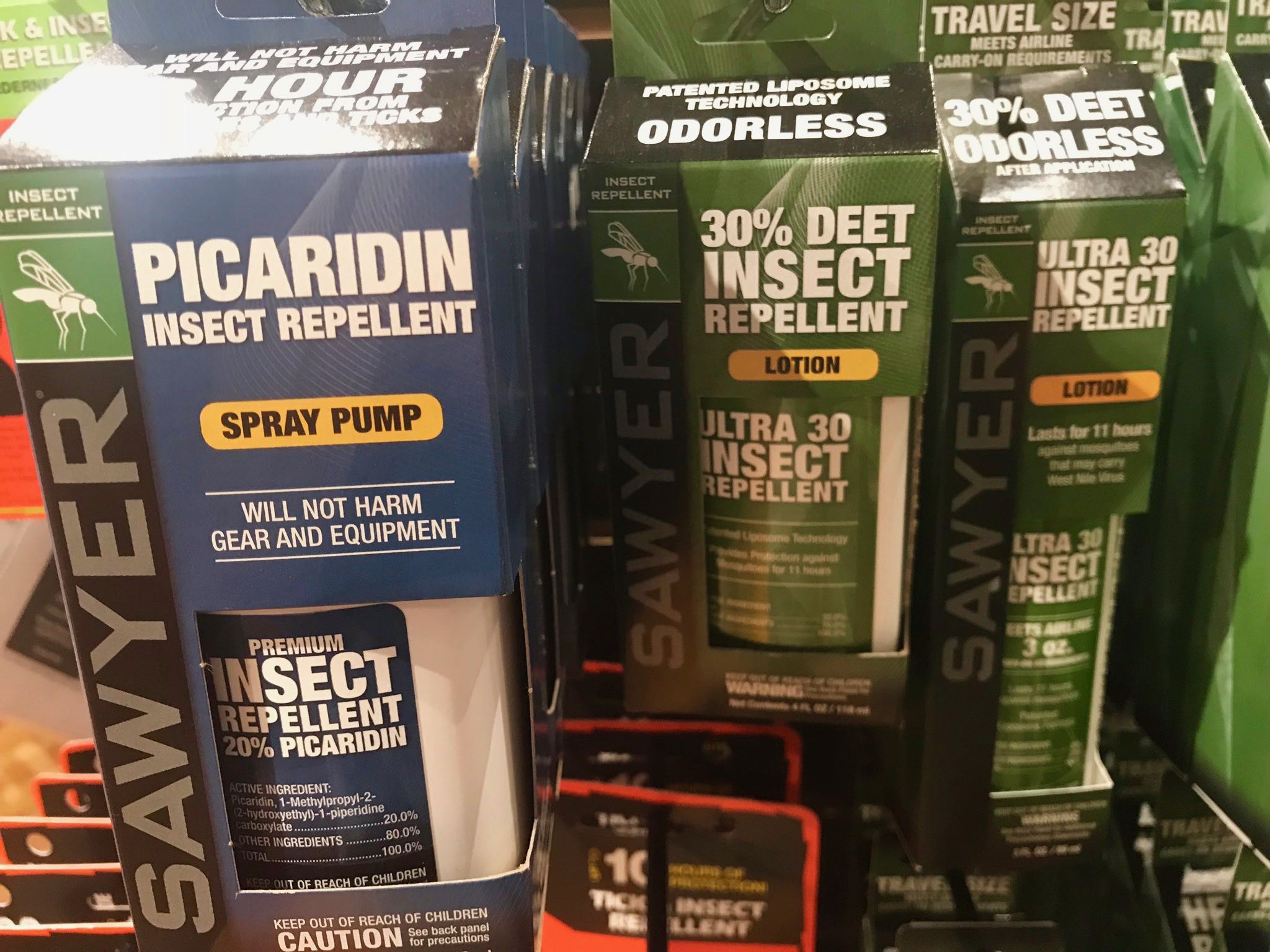
Chad Pickens, our Chapel Hill store manager and a fan of living a long, healthy life, has this bit of advice for anyone nervous about using bug spray: it beats the alternative, “by a long shot.”
The alternative? Contracting Zika, West Nile Virus, a variety of exotic fevers, Lyme disease, Rocky Mountain Spotted fever and a host of other mosquito- and tick-borne illnesses.
Two things Chad wants you to know right off:
- Bug sprays and lotions work through evaporation. That is, the ingredients you put on your skin work by moving away from your body — and thus, toward the intruding pest — not by absorbing into it. They’re creating a shield around you, not within you.
- The most effective way of repelling pests doesn’t even involve contact with your skin: it involves soaking your clothes in a repellant that’s proven effective — in the eyes of the Centers for Disease Control and Prevention — at keeping ticks, mosquitoes and other offenders at bay.
Start with your clothes
“When people come into the store I start the conversation right here,” Chad says, picking up a container of Sawyer Permethrin Premium Insect Repellant. The 24-ounce spray bottle contains the active ingredient permethrin, which Sawyer says kills “ticks, mosquitoes, spiders, chiggers, mites, and more than 55 other kinds of insects.” Synthetically produced, permethrin resembles the naturally occurring extracts from the chrysanthemum, known for its insect repelling qualities.
“Take your outdoor clothes — pants, shirts, socks, hats — hang ‘em outside and just soak ‘em,” Chad advises. “The problem most people have is they just give a light application. You really need to soak ‘em.” (That 24-ounce bottle will treat four outfits, according to Sawyer.) Once the clothes dry, they should be good for six weeks or six washings.
“It doesn’t just repel ticks and mosquitoes,” Chad says, “it kills them.”
Chad says some clothes already come pre-soaked, via a process called Insect Shield®, which can withstand up to 70 washings. “But really, you can insect-proof any of the clothes you already have.”
 The deal with DEET
The deal with DEET
While permethrin puts up a good first defense against insects, Chad says you should also use a spray or lotion that does come in contact with your skin. Lotions, he notes, exhibit less transdermal absorption: that is, they’re less likely to absorb into your skin. (So yes, your skin does absorb some of the repellant, but again, it’s designed to move away from your body.)
DEET has long been popular as a bug spray, and while the name conjures fear among some outdoor enthusiasts, Chad says those concerns aren’t supported by reality. The CDC and Environmental Protection Agency agree, noting that in rare instances it’s been known to cause skin irritation.
Part of DEET’s bum wrap as a bug spray may come from the fact it’s a “plasticizer.” Get a little on your watch face and it could cause the plastic “to go soft,” as Chad puts it.
That tendency to damage plastics is especially problematic for fishermen. Exposing fishing line to DEET can greatly weaken, and even destroy it.
The Picaridin option
That’s why, around 2005-2006, Great Outdoor started carrying picaridin-based insect repellants. Picaridin, like permethrin, is a synthetically produced chemical based on the properties of a plant extract, piperine, found in plants that produce black pepper. Chad says the CDC has found that picaridin is as effective as DEET in similar concentrations.
Sawyer, for instance, offers Picaradin Insect Repellant that’s effective for 14 hours.
“But when you’re done,” advises Chad, “you’ll want to wash it off.”
Other things you can do
Five related bits of advice when it comes to:
- When using insect repellant in tandem with sunscreen, Chad advises putting on the sunscreen first. “Sunscreen works by absorbing into the skin,” he says. “Wait about 30 minutes, then put on insect repellant.”
- Special rules apply to young children. Be sure to read the warning label of any product you may use, and consult the CDC link below for specifics.
- If you’re planning to fly, be sure to get the 3-ounce version of whatever you use; anything larger won’t make it past security in your carry-on luggage.
- Mosquitoes tend to gravitate toward darker colors, especially blue. Wear light colors, especially during mosquito season.
- Tightly woven, long-sleeved shirts and pants can be helpful in preventing bites, even in hot summertime temperatures. “New fabrics,” says Chad, “have made those items MUCH more comfortable.”
Chad says Great Outdoor also offers repellants that employ only naturally-occurring ingredients, including peppermint oil, oil of lemon eucalyptus, and geraniol.
While Chad is high on the range of repellant options offered by Great Outdoor Provision, he concedes that none are perfect.
“There’s no mosquito repellant in the world that’s going to give you 100 percent protection out on Cape Lookout in the middle of summer.”
Learn more
- For more information on bug sprays and the various ways to protect against insect bites, visit the Centers for Disease Control and Prevention here.
- Learn more about bug sprays from the National Pesticide Information Center, here.
- Learn more about repellants using natural ingredients from WebMD, here.
- To learn more about ticks and dealing with them, visit the Tick-Borne Infections Council of North Carolina here.
